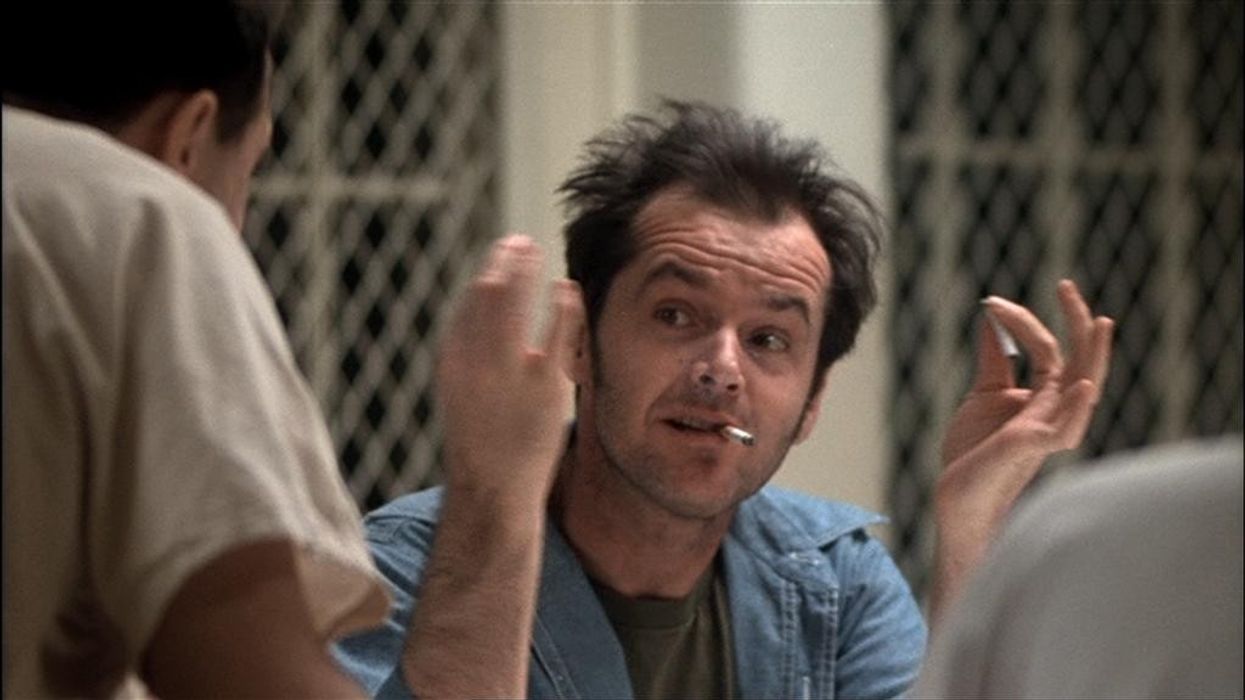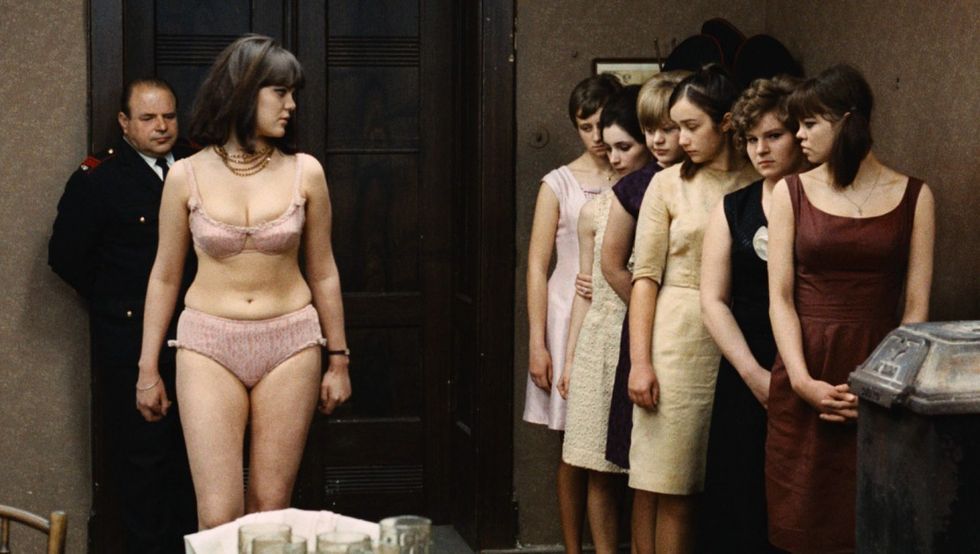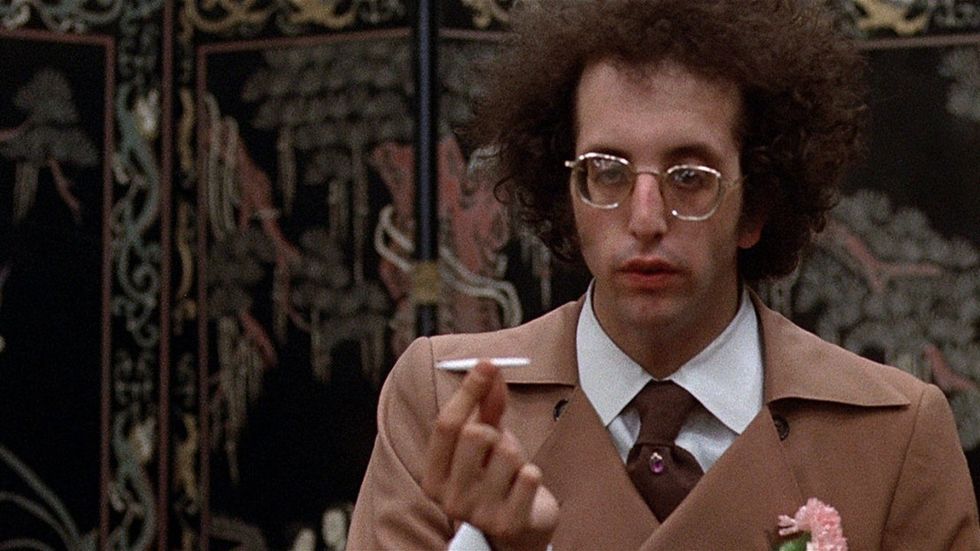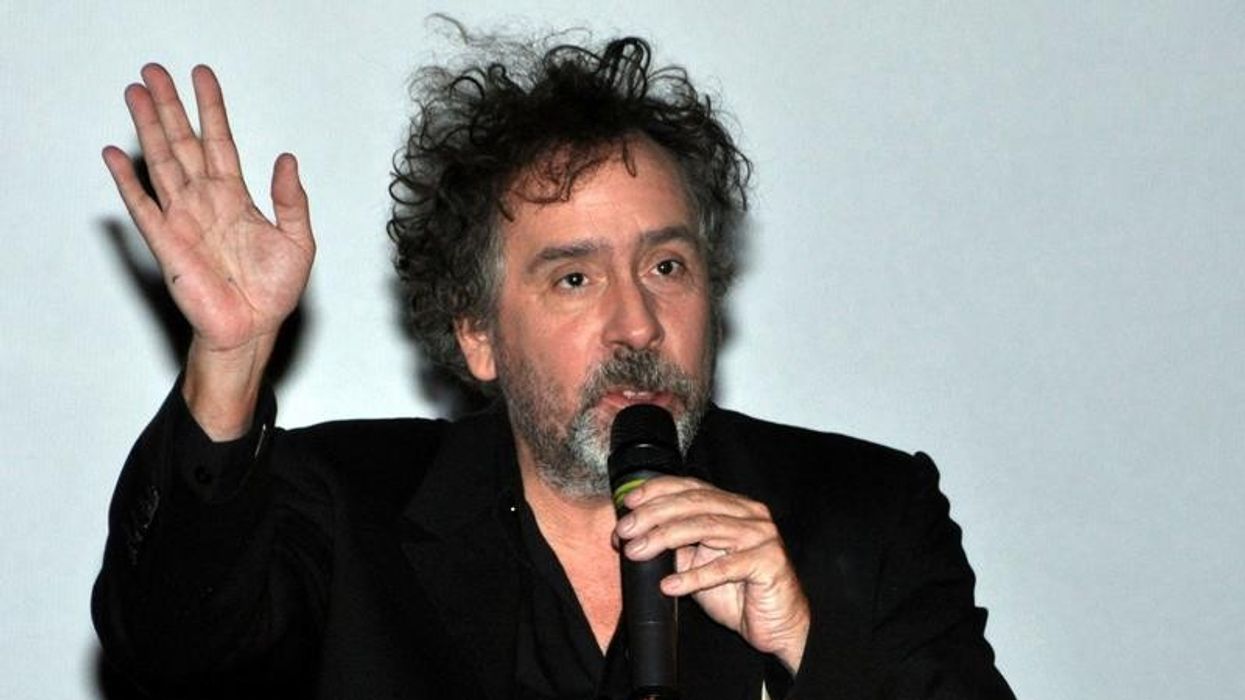A Remembrance: Milos Forman's Meteoric Impact on Global Cinema
The famed 'One Flew Over the Cuckoo's Nest' director and multi-award-winner had a unique sensibility steeped in the Czech new wave that he helped create.

Miloš Forman's filmography hardly needs to be reiterated, it's practically legendary. The child of an innkeeper who died in the Holocaust and an architect he wouldn't meet until well into his life, Forman was ten when he lost everything he had. Raised by whichever family and friends could afford to take care of him before being sent to a boarding school, the young Czech survivor grew into an Academy Award-winning director whose movies are known the world over.
Forman's films competed at Cannes and every other international film festival, started careers, brought actors Oscars, won Golden Globes, BAFTA, jury prizes, critics awards, Césars, lifetime achievement awards. The Directors Guild of America changed its rules to allow him to come join after having lived and worked in Europe all his life. That's how much people (Mike Nichols, specifically, who spearheaded the campaign to have him imported) believed in his art, even before he changed American film culture with a bevvy of box office hits. He had a movie theatre named after him in his hometown in the Czech Republic, he even had an asteroid named after him, which is fitting because he tore into American film like one, leaving a crater filled with career-making performances, new artistic movements, and quivering collaborators who loved what he brought out of them.
He even had an asteroid named after him, which is fitting because he tore into American film like one.
Developing a signature
Forman attended the King George boarding school, where his classmates included the future directors Jerzy Skolimowski and Ivan Passer, who discovered and first worked with the director of photography Miroslav Ondricek in his landmark film Intimate Lighting. Ondricek would become one of Forman's most important collaborators. After graduating, Forman studied screenwriting at the Academy of Performing Arts in Prague. He made a few short documentaries which led to his being able to finance his first fiction film, Peter and Pavla (or Black Peter) in 1965. Right away, his unique approach was evident, even in the small scale and unassuming Black Peter. The bleak, cold shops and factories his protagonist haunts hint at a fixation on the way labor and power structures create tension and dissatisfaction. A scene of his hero being questioned over a bowl of soup, his reactions, sleepy eyes avoiding the grilling, would become a fixture of Forman's cinema. The voice of his accuser rings out in the kitchen but all we see is the face of Peter.
Think, too, of the therapy scenes in One Flew Over The Cuckoo's Nest, the parade of hopeful chanteuses at the framing audition in Taking Off, the beauty pageant in The Fireman's Ball, the faces waiting in the Holland Tunnel in the beginning of Hair. Forman's camera was meant as a sympathetic listener, but also an investigator. He wanted to know what made the rebellious tick. He would draw them out into ugly places, letting their words reveal depths even they hadn't considered. Forman was like a psychologist, staring into faces and letting people pace and speak their minds, knowing nothing is more useful an interrogative tool than simply listening.
Early films
Ondricek, Passer, and Forman collaborated on a documentary called Audition in 1964, about a brass band. It opens with one of the best sequences in the director's career. A motorcycle gang lines up for a quick race, their engines revving loudly on the soundtrack, and just as the flag waves (in expressionistic close-up), the sound of the engine cuts out and the music of the brass band drifts in, Forman and Ondricek film the motorcycles in about a medium shot, meaning we can't see the wheels touch the ground (they're partially obscured by tall grass) just the men on their bikes soaring across the track. That juxtaposition of unexpected, if ragged, beauty and unfettered momentum would remain an incredible tool for Forman as he continued to direct. The opening of Amadeus, that great flurry of motion as Ondricek's camera races through space, was little more than a handsomely appointed second take of the same idea. Forman never lost touch with what he did well when behind a camera, what excited him and his audience about watching movies.

Forman quickly broke into world cinema following his early efforts. Loves of a Blonde was his second feature and it was nominated for the Academy Award for Best Foreign Language film, becoming, like his next film The Fireman's Ball, a sort of symbol for the filmmaking movement known as The Czech New Wave. Forman was its patron saint, his movies traveling far and wide, showcasing the post-Godardian antics and sly humor of which the Czech filmmaking vanguard was capable. The film follows a worker at a shoe factory in a town where women outnumber men 16 to 1. The intimate black and white images of her search for companionships (female friends, would-be male lovers) is tragicomic and enrapturing. The film's most famous composition, of the heroine laying naked in bed on sheets the color of her skin with her lover's head obscuring her vagina hints at the film's tonal victories, managing to be tender and ridiculous at once. The boy's efforts to scare up some ambiance before they sleep together are a tiny masterclass in physical humor, and the many tableaux Forman creates for his petite blonde heroine are each more voluptuous than the last. It's a sympathetic and beauteous portrait of young womanhood.
The Fireman's Ball was even better. If Ondricek worked well in black and white, he came alive in color, granting Forman new incisive might. The film follows a disastrous ceremony to honor the lazy and corrupt firemen in a small town. They can't agree on any one point and demand a beauty pageant be organized in their honor, so the horny old men can ogle the women, and naturally, they don't even like the few women bored or naive enough to join in. Forman and Ondricek's lighting of the dank beer hall where the action transpires, of the sallow, sagging faces of the officials (Forman loved oddball faces, collected them throughout his career and holding onto a stock company of beautiful grotesques played by Danny DeVito, Michael Berryman, Vincent Schiavelli, Kenneth McMillan, Brad Dourif and Michael Jeter) is honest to a deliberate fault. The ugliness is the point, scored ironically all the while by triumphant dancehall horns.
The film opens with one of the firemen losing his footing on a ladder, hanging from a light fixture and accidentally setting fire to the party banner. It ends with a house burning down while the firemen impotently try and fail to put it out. Unsurprisingly, Forman was already planning to leave the country when the film was playing festivals. His disgust with Czech politics (coming to a head in the '68 Prague Spring) was evident in every frame of Fireman's Ball, from the glasses of unforgiving beer and the plates of unappetizing meat to the clumsy bureaucracy bested by acts of stupidity, this film was as searing a film as you could ask for without ever once mentioning what it's criticizing. It's also darkly hilarious. If the 1968 Cannes Film Festival hadn't been canceled, it would have been a shoe-in for one of the top prizes.
One Flew Over the Cuckoo's Nest doesn't look a million miles from the sturdily grim films Forman had been making for years.
Coming to America
It took him a few years to successfully emigrate, but it was immediately apparent he'd landed on his feet, so to speak, when Taking Off hit theatres to near-universal praise and a host of international awards. The 1971 farce/satire of the counterculture was indebted spiritually and practically to Mike Nichols, who'd helped Forman find his place in the States and the DGA. The film stars Buck Henry, Nichols' regular screenwriter, as a man whose daughter vanishes into the burgeoning hippie and head scene in lower Manhattan. He stumbles around looking for clues and finds only societies he can't quite fit into (a fixation of co-writer Jean-Claude Carrière).
The film works wonderfully today for a number of reasons. Ondricek's lighting makes every environment look untouched by time, the colors intact and surfaces clear enough to see the dust and dirt pockmarking each one. The film's deliberately naive look at the drug culture of New York is meant to be semi-instructive, as Henry's bewildered square is our POV character. The film knows he's out of his element and so doesn't need to exaggerate the behavior or clothing of its hippie element, unlike just about every film about the counterculture made during that time. It does exaggerate the bourgeois inanity of its heroes and their ilk, searching in vain for the children they never bothered to understand. At the end, reunited with their daughter who's dating a man who looks like Charles Manson, singing over cocktails, it doesn't feel like a victory in the slightest. His editing strategy, juxtaposing women auditioning with folk songs, over the endless search for Henry's runaway daughter, is directly carried over from his previous Czech films. The result is a film about New York that doesn't feel like a time capsule, so much as a documentary kneaded like dough into radical fiction.

Working with Haskell Wexler as his director of photography for Cuckoo's Nest, Forman conjures a buffet of medium close-ups, of anguished and confused faces, dripping with sweat and leaking cigarette smoke, paranoia and real sickness creeping into the mental illness and fatigue plaguing the inmates at an institution in the middle of nowhere. Nicholson's attempts to stir up a little trouble are of course beaten down. It's The Fireman's Ball without the satirical framework. Things are as bad as they seem. The buzzing fluorescent lights, the omnipresent classical music, the sickly blues, grays and greens. It's as alienating in its way as the London of A Clockwork Orange, only a good deal more effective and scarring as its based on what our country's mental healthcare system actually looks like. The image of hulking mute Chief Bromden (Will Sampson), unable to communicate with the world that has forgotten and damaged him even more than the imploding old men interned with him, will last several lifetimes.
After the Cuckoo's Nest
Forman followed Cuckoos' Nest with Hair, a Manhattan-set musical with Twyla Tharp choreography and utilizing photographic tricks that had become the de facto method of capturing the city, long lenses crawling towards the faces of the forgotten and un-emotional wide angles. They don't make for compelling choices when there's singing and dancing in the frame, but as a method of showing how grimy and forgotten New York looked in the late '70s, it was unbeatable. As prescient and ingratiatingly weird as Taking Off was, that's how clueless and aged Hair is, though as a hokey time capsule of bad fashion and dirty streets, it ranks with Sidney Lumet's The Wiz as some kind of kooky must-see. New York looked like this, even if nothing else on camera is remotely authentic.
Forman spent the rest of his career making period pieces. Ragtime should be much more well known than it is, a forked epic about life in turn of the century New York, every bit the equal of the much better known Amadeus. Both films are compositionally rich and use vast musical scores (by Randy Newman and Mozart, respectively) to move mountains of time and incident. Amadeus cleaned up at the Oscars, taking home an armful of technical awards and garnering Forman another best director prize. Valmont in 1989 was a sort of stylistic sequel, with gorgeous production design and a character who combined elements of Mozart and Salieri. Valmont, as played by Colin Firth, is an arrogant lothario who just happens to have the looks and charm to back up his every boast. You couldn't really make the film today, as so much of it centers on the corruptible sexuality of young women. Annette Benning and Meg Tilly give terrific performances, unafraid of huge emotional and passive aggressive displays and better because of it.
People never changed, their misunderstandings never cleared up, history repeated itself—and Forman was there to elegantly prove it.
The People vs. Larry Flint, Man on the Moon and Goya's Ghosts would follow and receive measured praise, failing to become the sensations that Cuckoo's Nest or Amadeus had, but still garnering respectable awards showings and box office numbers. Goya's Ghosts was the least liked and least popular of Forman's work, but there's still much to admire in its overripe tale of court intrigue and religious and sexual violence. The People Vs. Larry Flint and Man on the Moon returned Forman to his early stomping grounds, both rife with decrepit cityscapes, charismatic creeps, gorgeous women, dumb men, blunted sexual politics. They're built on bravura performances (Jim Carrey as Andy Kaufman and Woody Harrelson as Larry Flint) surrounded by a rogue's gallery of terrific character actors. Forman's kind of thorough and fearlessly sexual biopic has become a thing of the past, unfortunately, because when done with Forman's artistry and steady hand, they could be hugely entertaining and not feel like a piece of a larger moralistic agenda.
Forman never lost himself in Hollywood, he only grew a little larger than the simplest compositions he once created in Czech backwaters. People never changed, their misunderstandings never cleared up, history repeated itself—and Forman was there to elegantly prove it. His appeal has always been summed up for me in an outburst early in One Flew Over The Cuckoo's Nest. One of the inmates can't ever get to the bottom of his paranoid fantasies and when he's interrupted by his bored cellmates, he shouts: "I'm not talking about my wife, I'm talking about my life, that's what I can't seem to get through to you. I'm not talking about one person, I'm talking about everybody. I'm talking about form! I'm talking about content!" That was what I wanted and got from everything Miloš Forman directed.
Featured image from 'One Flew Over the Cuckoo's Nest'











